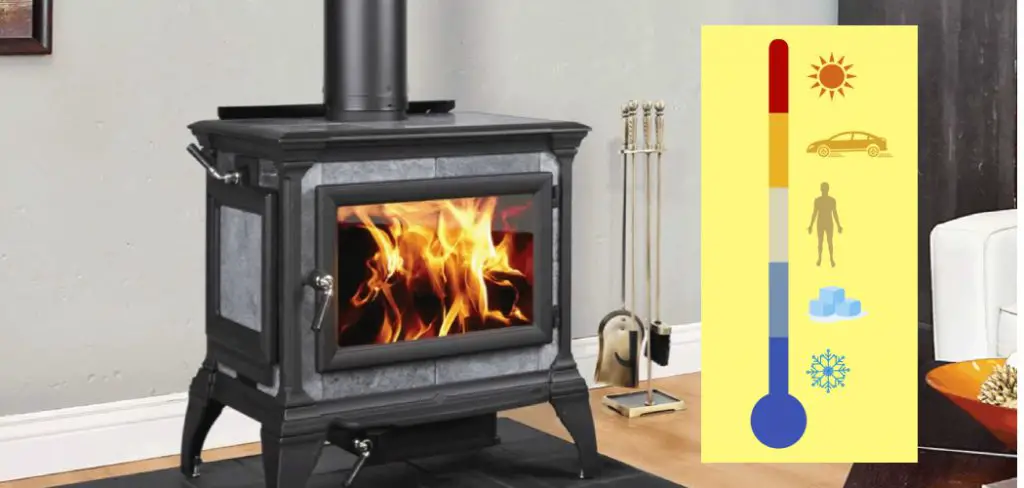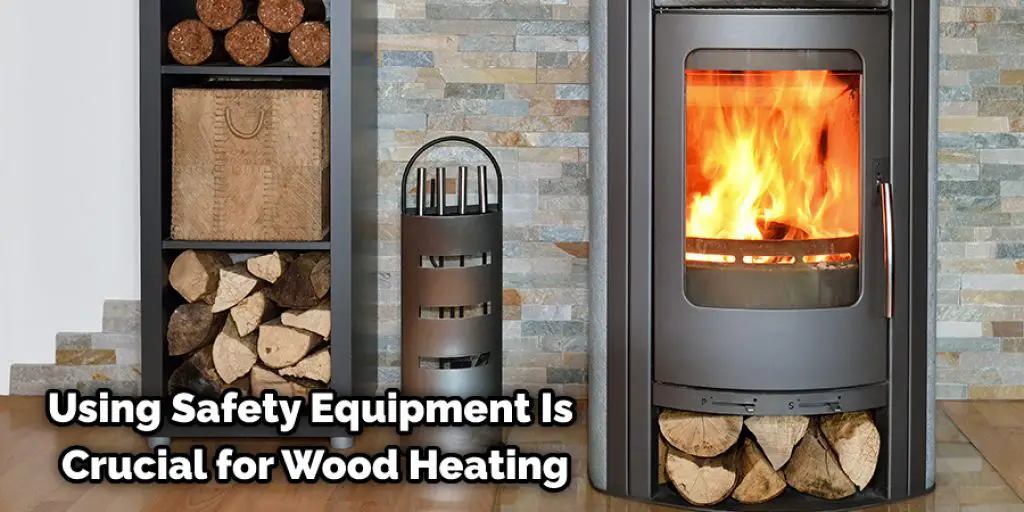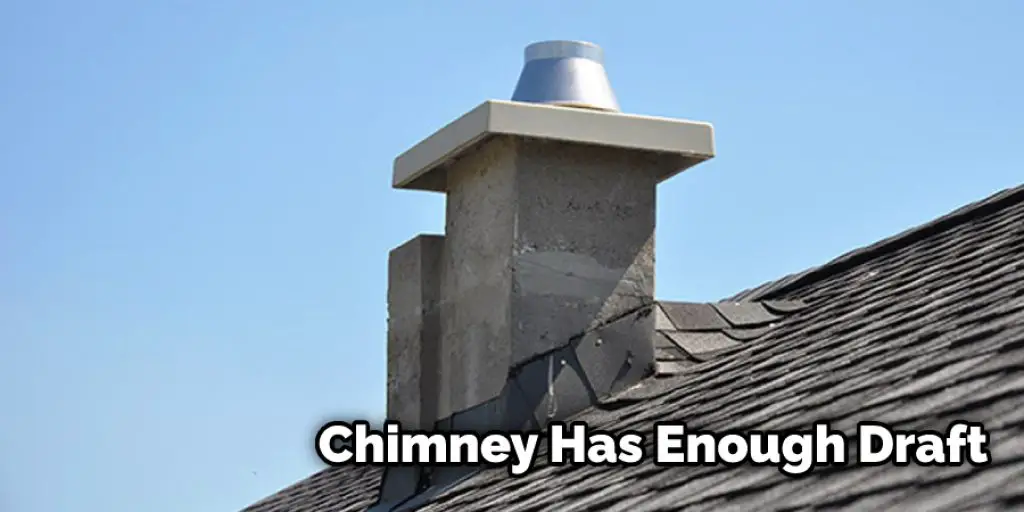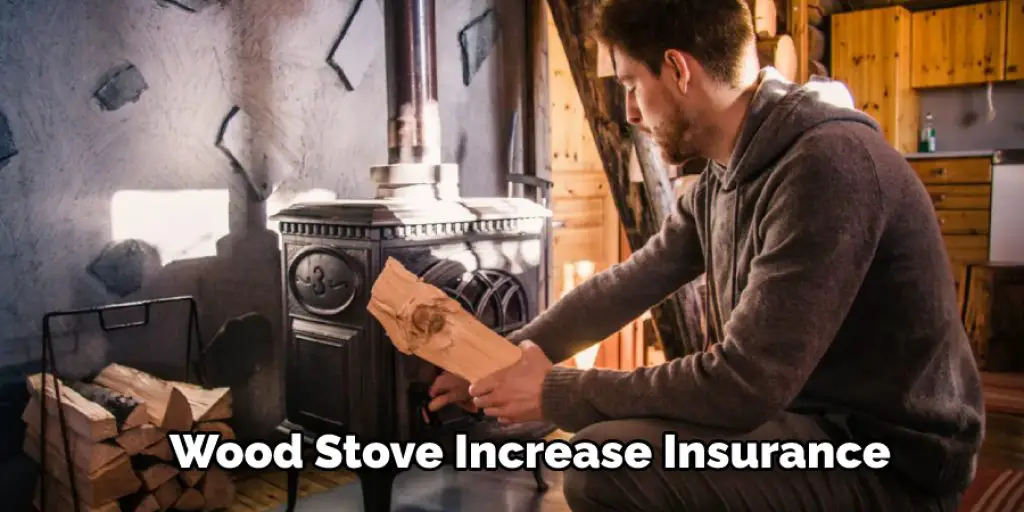How to Circulate Heat From Wood Stove
The wood stove is one of the best ways to keep your home warm during the cold winter months. However, many people don’t know how to circulate heat from a wood stove efficiently. This blog post will teach you some tips on how to circulate heat from your wood stove to make sure that your home stays nice and cozy for all of those long nights spent inside!

Your basement, kitchen, living room, and bedroom are all places where you want to make sure that enough heat is coming out of the vents near them. If these rooms aren’t heated enough, it’s time to get creative with other smaller sources like space heaters or portable heaters. It is essential to know how to circulate heat from wood stove.
15 Steps to Follow on How to Circulate Heat From Wood Stove
Step One: Use the Right Stove
Using the proper stove is crucial to circulate heat to your home. However, using an improperly sized stove for your room, or putting it too close to certain materials, could result in structural damage or fires.
You can find stoves that are certified under EPA emission standards for use in homes or cabins. Visit woodheat.org or saveonenergy.com, and click on the “Emissions” tab to find more information about various stoves.
Step Two: Maintain Your Stove
If your chimney is not maintained correctly, you may be losing heat instead of sending it up into your room! It would help if you cleaned your chimney every year before the heating started. If you are not the do-it-yourself type, hire a trained chimney sweep to clean your chimney. Then, during the heating season, have your chimney cleaned once a year by a qualified chimney sweep.
Make sure you choose a sweep who specializes in wood-burning appliances, as they know how to deal with soot and creosote buildup best. If you do not own or use a wood stove, don’t assume that this cleaning service isn’t necessary. You may be surprised to learn that chimneys can become clogged with all sorts of debris, including small animals!
Step Three: Use Safety Equipment
Using safety equipment is crucial for wood heating. You should have an approved spark arrester, a stovepipe with a thimble at each end that fits the stovepipe tightly, and other accessories to prevent chimney fires or injuries. Visit woodheat.org to find easy-to-understand information about safety equipment, or ask your dealer for more details.

Finally, remember to keep wood stoves clean. Develop the habit of cleaning your stove after each use. This will help prevent dangerous flue deposits and creosote buildup in chimneys. Stove manufacturers recommend sweeping out ashes at least once a week more often if you burn more than one or two fires a day. You should also check your chimney for creosote deposits at least once a year.
Step Four: Stack the Wood Carefully
It is important to stack your wood carefully. Stack your wood in a dry location, keeping it off of the ground if possible. Make sure that you don’t overstock your wood, and stack the pieces so air can circulate freely around them. Using this method will help you get more heat from your stove throughout winter with less wood.
It will take a little bit of time to learn how to circulate heat from your wood stove, but once you do, it is a great way to warm your home without spending a lot on firewood or putting out tons of effort. The more experience you have with this type of heating, the better you’ll be able to adjust your fire and keep the heat going where you want it.
Step Five: Fill Your Stove for Maximum Heat
When you are ready to start a new fire, fill your stove as full of wood as possible. It is better to have too many pieces of wood on the stove than too few. Of course, you can permanently remove some if you need to once the fire starts burning well, but it is difficult to make up for the lack of wood once you have a fire going.
In the beginning, put small pieces of wood on your stove. As they burn down to coals, add larger pieces of wood to sustain a longer fire. Wood stoves don’t produce very much ash, so you can put in a lot of wood to create the fire. However, if your stove is too small for the size of the room it heats or if it is inefficient (and therefore burns through large amounts of wood), you will not want to burn as hot.
Step Six: Open Window Near Fireplace
Open a window near the fireplace three or four inches for ventilation. Note that opening a window won’t cause cold air to pour into your room. The opposite is true: opening a window near your fireplace will help circulate warm air from your wood stove into your room!

The heat from the fire will cause hot air to rise and drift away from the stove. The rising air creates a draft that then sucks in cold air through the open window near the fireplace. Once this cool air passes across the fire, it becomes warm. Then, once the now-warm air goes into the room through the window near your fireplace, another draft is created that pulls in more fresh, cold air to sustain an efficient system.
Step Seven: Keep Window Closed
Conversely, you must keep the window closed between fires. This will help to hold in the heat that has accumulated inside your stove. If you leave the window open between fires, then there is no way for old air to escape and be replaced with fresh air, which can cause your room to become stuffy and unhealthy.
To maximize heating efficiency, only open the window near your fireplace when adding wood to the stove. Any time you open the window, the draft created will bring in air from outside. This outside air is unlikely to be heated by your fire, so it may chill your room rather than warm it up. This will help in how to circulate heat from wood stove.
Can a Wood Stove Heat an Entire House?
There are several ways to make sure that your house gets heated, including home heating oil and wood stoves. One question that is often asked about the two types of heaters is whether a wood stove can heat an entire house. This article will look at some of the details behind this question and how using a wood stove compares to using other types of heaters.
In order to make a very basic comparison, it is necessary to look at some numbers. The average house with about 1,650 square feet of floor area will need about eight cords of wood to last a whole year. Of course, this calculation depends on how much the homeowner would like the house heated and also if they wish to heat the majority of their water with wood.
Can I Use My Chimney for a Wood Burning Stove?
This is only true if the chimney has enough draft. The draft will be provided by the size of the chimney, which you will need to check prior to installing a stove. If you are unsure, consult your local fireplace dealer or an HVAC professional. The Fireplace Chimney Draft Inducer is not designed with wood-burning stoves as the heat from a burning stove may damage or melt it.

One of the most common misconceptions about using a wood-burning stove is that you can use your existing chimney and fireplace flywheel to deliver air to your stove. If you want to find out more about how to circulate heat from wood stove, keep reading.
Can You Vent a Wood Stove Horizontally?
Venting a wood stove horizontally can be done with some modifications. First, you need to ensure you have the correct size pipe for your chimney, clean it frequently and install a damper. The damper will close off the bottom of the chimney when not in use so that animals won’t crawl up into it or rainwater doesn’t run down into the stove.
The pipe for a wood stove needs to be sized to match your chimney. You can hire a professional or look up online instructions on how to size the pipes yourself. If you do it yourself, make sure you double-check your sizing because if it is too tiny, smoke and gases will back up into the room.
For a wood stove to draw correctly, you need to have at least four inches of clearance between the flue and combustibles and attach it vertically and as close to the chimney as possible. Keep the pipe clear of obstructions such as doors and windows. The horizontal section can be up to 30 inches long. However, you can’t make it too short because the air needs to get into the combustion chamber for efficient burning.
Frequently Asked Questions
Can a Wood Stove Heat an Entire House?
Wood stoves are one of the most efficient heaters for your home. They can be used to heat an entire house in a short amount of time, but you should keep in mind that not all houses are built to accommodate wood stoves.
The size and location of your stove will determine how long it takes to heat up the entire house. It will also depend on the type of wood being burned as well as how much fuel is being burned at once. Generally speaking, it will take about an hour or so for a stove to reach its maximum temperature when using hardwood logs or pellets while burning 5-10 gallons per hour.
Does Having a Wood Stove Increase Insurance?
Having a wood stove in your home can be a great addition to your heating system. However, there are certain things that you should know before purchasing one.
First, the installation of a wood stove is not something that needs to be done by an HVAC professional. There are various manuals and DIY guides available online to help you understand how to install it yourself.
Secondly, because of the fire hazard associated with wood stoves, having one installed does not automatically increase your insurance coverage or premium rates for homeowners insurance. You would need to have additional safety measures put into place such as smoke detectors and carbon monoxide detectors which could cost up to $1,000 depending on the type of furnace that you have installed.

How Often Should You Empty Ashes From Wood Stove?
There is no set rule for how often you should empty ashes from your wood stove. You should check the ashes and see if they are completely cooled down or not before deciding to remove them.
If they are cool, then you can remove them. However, if the ashes still have a small amount of heat in them, you will need to wait until they have been fully cooled down before removing them.
Does a Wood Stove Make Your House Smell?
The best way to prevent a wood stove from making your house smell is by burning it properly. You must use the proper kindling and lighting techniques so that your home does not have any unpleasant odors.
To Burn Wood in a Safe Manner, Follow These Tips:
- Do not overload the stove with too much wood at once or place more than one log on top of each other. This can cause the logs to smolder and eventually explode in flames, making your home smell bad.
- Use dryer lint instead of the newspaper as kindling, as this has less moisture content than paper and will help keep your home smelling fresh for longer periods of time.
Do Wood Stoves Save Money?
In terms of heating efficiency, wood stoves are usually very efficient compared to other types of heaters. This is because they produce a great deal of heat that is easy to regulate and use.
However, if you don’t have enough space for a wood stove, you may be better off with another type of heater. A good example would be electric space heaters or oil furnaces which can provide a lot more energy than a wood stove without taking up as much room.
Conclusion
As you have seen in this blog post, there are many ways to circulate heat from your wood stove. We hope that by providing these various techniques for heating with a wood stove, we can help homeowners save money on their energy bills while still being able to enjoy the warmth of burning firewood! In addition, woodstove owners can circulate their cabin’s heat by opening windows on opposite sides of the room.
This way, you’ll get a nice cross-breeze that will help to eliminate any smoke or odors from your wood burner. You may also want to open the fireplace damper while circulating air for an even more efficient circulation system in your home! The conclusion paragraph is informative and provides information on how to circulate heat from wood stove.
Check it out also – How to Install a Wood Stove in the Basement .








